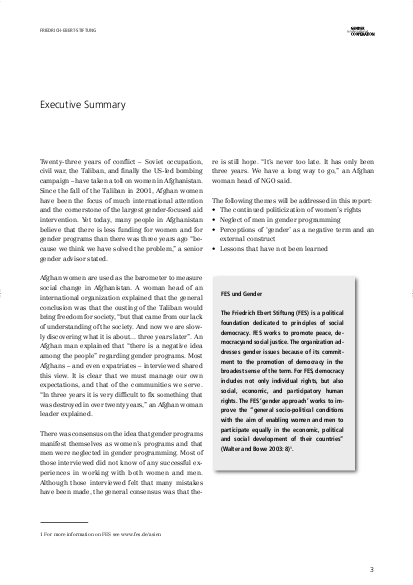
Twenty-three years of conflict – Soviet occupation, civil war, the Taliban, and finally the US-led bombing campaign – have taken a toll on women in Afghanistan. Since the fall of the Taliban in 2001, Afghan women have been the focus of much international attention and the cornerstone of the largest gender-focused aid intervention. Yet today, many people in Afghanistan believe that there is less funding for women and for gender programs than there was three years ago “be- cause we think we have solved the problem,” a senior gender advisor stated. Afghan women are used as the barometer to measure social change in Afghanistan. A woman head of an international organization explained that the general conclusion was that the ousting of the Taliban would bring freedom for society, “but that came from our lack of understanding of the society. And now we are slow- ly discovering what it is about... three years later”. An Afghan man explained that “there is a negative idea among the people” regarding gender programs. Most Afghans – and even expatriates – interviewed shared this view. It is clear that we must manage our own expectations, and that of the communities we serve. “In three years it is very difficult to fix something that was destroyed in over twenty years,” an Afghan woman leader explained.
